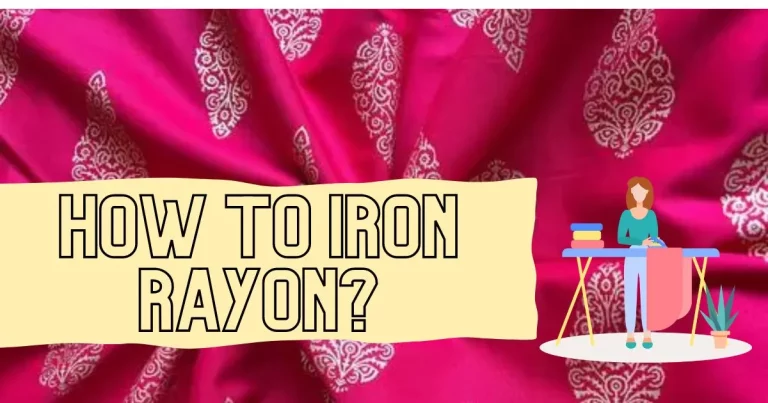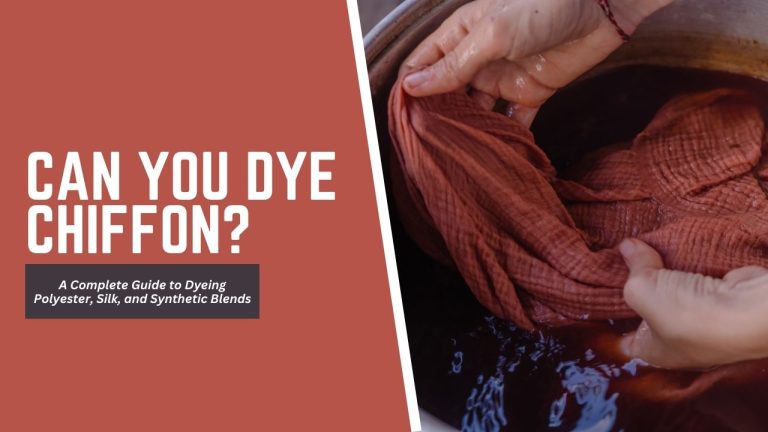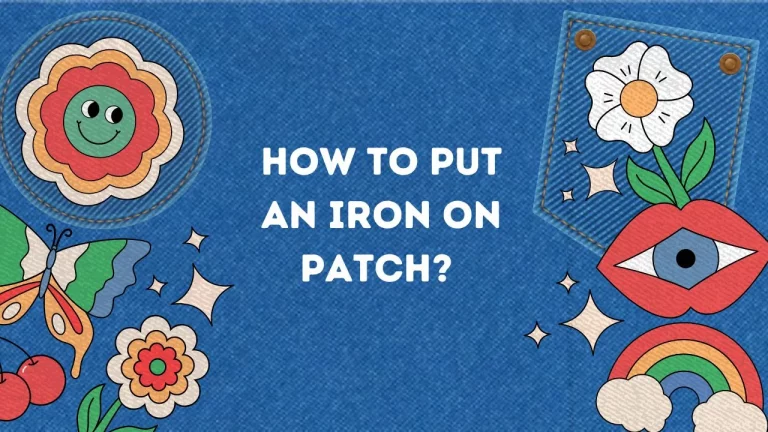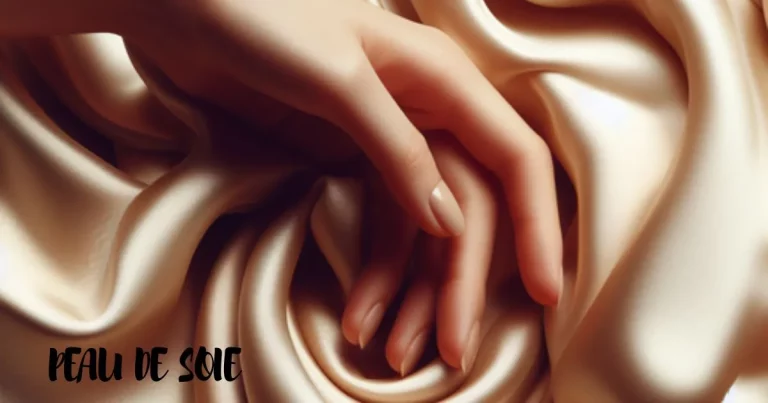A GUIDE TO DYE CHIFFON
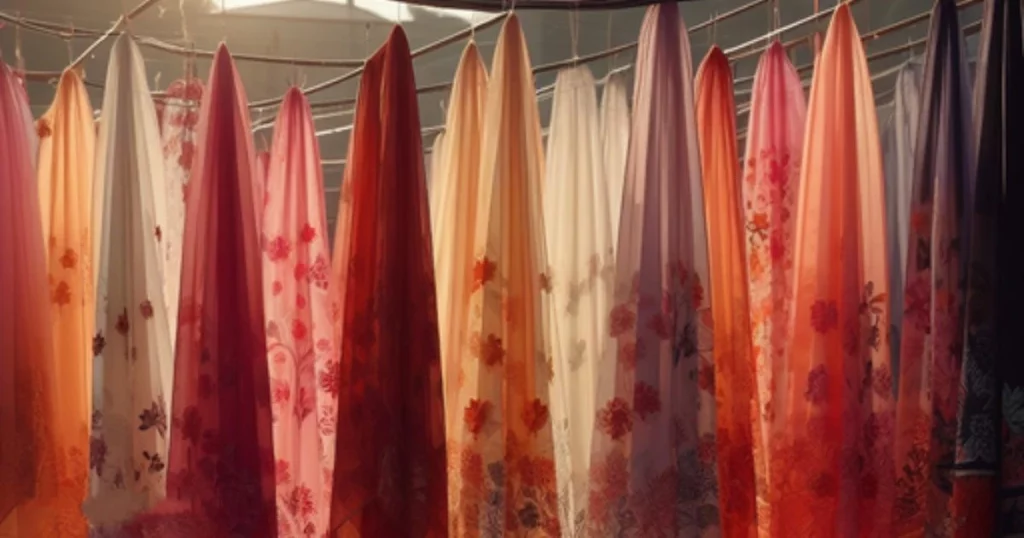
Choosing the art of dye chiffon brings up a world of artistic possibilities and turns a blank canvas into a unique work of art. This tutorial delves into the delicate art of dying chiffon, be it silk or synthetic polyester chiffon. It offers insights into the procedure and the selection of appropriate dyes like acid dyes or Dylon for Synthetics.
What is chiffon?
Chiffon is a lightweight, sheer fabric known for its elegant drape and delicate texture. Typically made from silk, polyester, or a blend of synthetic fibers, chiffon has a subtle shimmer and a smooth, slightly rough feel. Its fine weave and transparent nature make it a popular choice for creating flowy and ethereal garments such as dresses, scarves, and veils.
How to dye chiffon? – when I dyed my chiffon dress!
Three years before, I found myself staring at a plain white chiffon dupatta, longing for a burst of colour to match the vibrancy of the approaching festive season. With a spark of creativity and a desire for a DIY project, I decided to embark on the journey of dyeing my chiffon dress. Armed with determination and a vibrant turquoise dye, I set up a makeshift studio in my kitchen.
First, I carefully prepared the chiffon by washing it thoroughly to ensure the dye would adhere evenly. I then filled a large basin with warm water and added the powdered dye, stirring until it dissolved completely. With a sense of anticipation, I dipped the chiffon into the turquoise concoction, watching as the fabric absorbed the color like a canvas coming to life. The delicate material seemed to dance with the dye, transforming from a blank canvas to a sea of enchanting turquoise.
As the chiffon absorbed the dye, I marveled at the magical transformation. I allowed the fabric to soak for the recommended time, periodically checking to ensure the color was developing evenly. After what felt like an eternity, I carefully rinsed the chiffon under cold water, witnessing the excess dye wash away to reveal a stunning, vibrant turquoise hue.
My DIY adventure had turned a simple white chiffon dupatta into a personalized masterpiece, ready to complement my festive ensemble. It was a satisfying journey of creativity and transformation, proving that a touch of color could bring new life to even the most delicate fabrics.
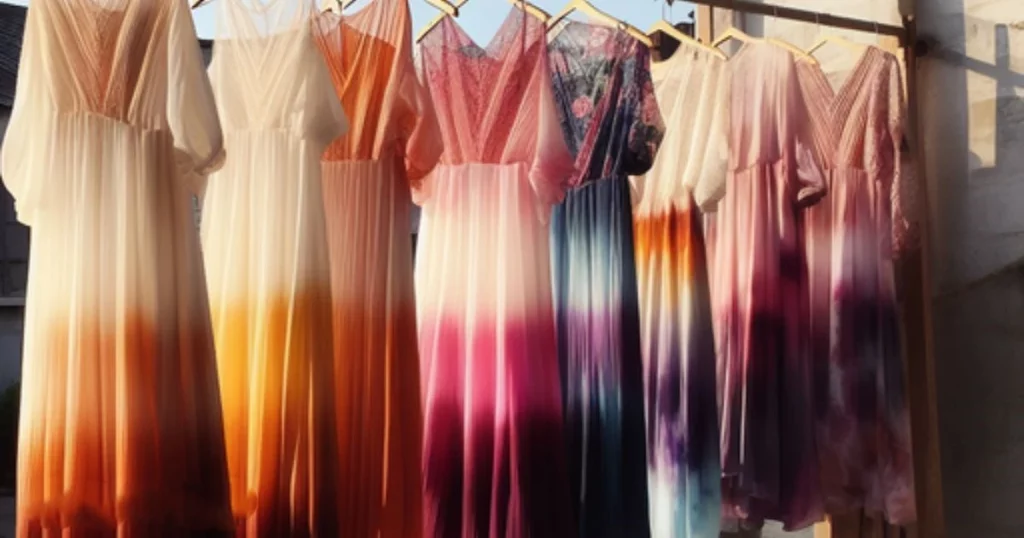
How to dye chiffon fabric?
Dyeing chiffon fabric requires a gentle touch and careful attention to maintain its delicate texture. Here’s a detailed step-by-step guide on how to dye chiffon:
Materials Needed:
- Chiffon fabric
- Fabric dye suitable for synthetic or silk fabrics
- Large basin or stainless steel sink
- Mild detergent
- Plastic gloves
- Stirring utensil
- Plastic bags or plastic wrap
- Water
- White vinegar (optional)
Steps
1. Prepare the Chiffon: Begin by filling a basin or sink with lukewarm water and adding a small amount of mild detergent. Gently agitate the water and immerse the chiffon, allowing it to soak for 5-10 minutes. Swirl the fabric around to ensure even cleaning. Rinse thoroughly with cool water and let it air dry completely.
2. Choose the Right Dye: When selecting a dye, ensure it is suitable for synthetic or silk fabrics. Choose a color that complements your project, and carefully read the dye instructions to understand the specific requirements and steps for your chosen dye.
3. Set Up the Dye Bath: Fill a large basin or stainless steel sink with enough warm water to submerge the chiffon fabric. Refer to the dye package instructions to determine the appropriate amount of water and dye for your project. Stir the dye thoroughly into the water, ensuring it is completely dissolved.
4. Pre-Wet the Chiffon: Before immersing the chiffon in the dye bath, gently wet the fabric with plain water. This helps the fibers absorb the dye more evenly. Wring out any excess water so that the chiffon is damp but not dripping.
5. Immerse the Fabric: Submerge the pre-wet chiffon into the dye bath, making sure the fabric is evenly spread out. Stir the fabric continuously to promote even color absorption. For a more intense color, add a tablespoon of white vinegar to the dye bath; vinegar can help set the color.
6. Monitor Dyeing Time: Keep a close eye on the fabric while it’s in the dye bath, as chiffon absorbs color quickly. Refer to the dye instructions for recommended dyeing times, and periodically check the color intensity. Adjust the time as needed to achieve your desired hue.
7. Rinse the Fabric: Once the chiffon reaches the desired color, carefully remove it from the dye bath. Rinse the fabric under cold, running water until the water runs clear. This step helps remove excess dye and prevents bleeding. Take care not to wring or twist the fabric during rinsing.
8. Wash and Dry: Wash the dyed chiffon with a mild detergent to further remove any remaining dye. Gently squeeze out excess water, avoiding harsh wringing that may damage the delicate fabric. Lay the chiffon flat on a clean, dry towel and roll it up to absorb excess water. Finally, lay the fabric flat to air dry, avoiding hanging, which could distort the delicate drape of chiffon. Once dry, your beautifully dyed chiffon fabric is ready for your creative projects.
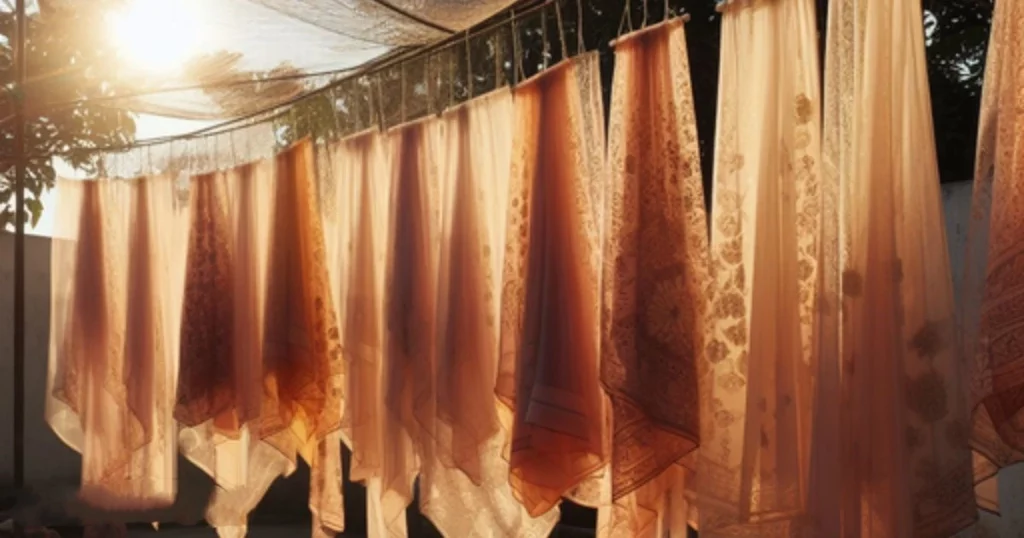
Rit dye for polyester chiffon
Rit dye, a popular brand of fabric dye, is known for its versatility and effectiveness in coloring a wide range of fabrics, including polyester chiffon. Polyester is a synthetic fabric that can be challenging to dye due to its resistance to absorbing color. However, Rit dye offers a specific product line designed for synthetic materials, making it a suitable choice for polyester chiffon.
Rit DyeMore for Synthetics
Rit’s DyeMore line is formulated specifically for synthetic fabrics, including polyester. The DyeMore for Synthetics dye is available in various colors, providing an extensive palette for creative projects. It is important to note that standard Rit dyes may not be as effective on polyester, so choosing the DyeMore line is crucial for achieving vibrant and long-lasting results.
Instructions for Dyeing Polyester Chiffon
When using Rit DyeMore to color polyester chiffon, follow these general instructions:
- Prepare the Fabric: Wash the polyester chiffon in mild detergent to remove any finishes or residues that may hinder dye absorption. Rinse thoroughly and leave the fabric damp.
- Prepare the Dye Bath: Fill a large stainless steel basin or sink with enough hot water to fully submerge the fabric. Follow the instructions on the Rit DyeMore package to determine the appropriate water-to-dye ratio.
- Dissolve the Dye: Stir the DyeMore dye into the hot water until it is completely dissolved. This ensures even color distribution during the dyeing process.
- Immerse the Fabric: Gently place the damp polyester chiffon into the dye bath, ensuring it is fully submerged. Stir continuously to prevent uneven coloring.
- Dyeing Time: Refer to the dye package instructions for recommended dyeing times. Polyester may require a longer dyeing time to achieve the desired color intensity.
- Rinse and Wash: After the recommended dyeing time, carefully remove the fabric and rinse it under cold water until the water runs clear. Wash the dyed polyester chiffon with mild detergent to remove any excess dye.
- Dry: Air-dry the dyed fabric flat, avoiding hanging, to maintain the delicate drape of chiffon.
Important Tips
By following these instructions and choosing Rit DyeMore for Synthetics, you can successfully and creatively dye your polyester chiffon with vibrant and long-lasting results.
Acid dye for chiffon
Acid dyes are an excellent choice for coloring chiffon, a delicate and lightweight fabric. Chiffon is often made from silk, and acid dyes are specifically formulated to work well with protein-based fibers like silk and wool. Here’s a guide on using acid dye for chiffon:
Materials Needed:
- Acid dye suitable for silk (available in various colors)
- White vinegar
- Stainless steel or enamel pot
- Stirring utensil
- Mild detergent
- Chiffon fabric
- Large basin or sink
- Water
- Plastic gloves
Steps:
1. Prepare the Fabric: Wash the chiffon fabric with mild detergent to remove any finishes or impurities. Rinse thoroughly and leave the fabric damp. This step ensures the dye can penetrate the fibers effectively.
2. Prepare the Dye Bath: Fill a stainless steel or enamel pot with enough water to fully submerge the chiffon fabric. The water should be hot but not boiling. Add the acid dye according to the package instructions, typically specifying the amount needed for the weight of the fabric.
3. Add White Vinegar: To enhance the dyeing process, add white vinegar to the dye bath. The vinegar helps set the color on silk fibers. Follow the recommended ratio provided with the acid dye instructions.
4. Immerse the Fabric: Carefully place the damp chiffon fabric into the dye bath, ensuring it is fully submerged. Use a stirring utensil to gently agitate the fabric, promoting even color absorption.
5. Heat and Stir: Slowly heat the dye bath, but avoid boiling to prevent damaging the delicate chiffon. Maintain a warm temperature and stir occasionally to ensure uniform dye distribution.
6. Dyeing Time: Refer to the specific instructions on the acid dye package for recommended dyeing times. Silk tends to absorb color relatively quickly compared to other fabrics, so monitor the process closely.
7. Rinse and Wash: Once the chiffon reaches the desired color intensity, carefully remove it from the dye bath. Rinse the fabric under cold running water until the water runs clear. Wash the dyed chiffon with mild detergent to remove any excess dye.
8. Air-Dry: Air-dry the dyed chiffon flat to preserve its delicate drape. Avoid wringing or hanging the fabric, as this may distort its shape.
Using acid dye for chiffon allows you to achieve vibrant and long-lasting colors while preserving the elegant characteristics of this delicate fabric. Always follow the specific instructions provided with the chosen acid dye for optimal results.
What is Best dye for chiffon?
The choice of the best dye for chiffon depends on the fabric’s composition. Chiffon can be made from various materials, including silk, polyester, or a blend of synthetic fibers. Below are recommendations for the best dye options based on the common compositions of chiffon:
1. For Silk Chiffon:
Acid Dyes: Acid dyes are specifically formulated for protein-based fibers like silk. They provide vibrant and long-lasting colors while maintaining the delicate texture of silk chiffon. These dyes require an acidic environment for optimal results, and white vinegar is often used to set the dye.
2. For Polyester Chiffon:
Disperse Dyes: Polyester, being a synthetic fiber, requires a dye that can effectively bond with its molecular structure. Disperse dyes are well-suited for polyester fabrics, as they have good affinity for synthetic fibers. These dyes work best in high-temperature conditions, ensuring thorough and even color penetration.
Rit DyeMore for Synthetics: Rit DyeMore is a specialized dye line designed for synthetic fabrics, including polyester. It offers a range of colors and is suitable for achieving vibrant and permanent color on polyester chiffon.
3. General Considerations:
Dye Compatibility: Always ensure that the chosen dye is compatible with the specific fiber content of the chiffon. Using the wrong type of dye may result in uneven coloring or poor absorption.
Preparation and Testing: Before dyeing the entire chiffon garment, conduct a small, inconspicuous test to ensure compatibility and to preview the potential color outcome. Additionally, pre-wash the fabric to remove any finishes that may impede dye absorption.
Gentle Handling: Chiffon is a delicate fabric that requires careful handling to preserve its drape and texture. Follow dyeing instructions meticulously, and avoid excessive agitation, wringing, or hanging during the dyeing and drying processes.
Fixatives and Setting Agents: Some dyes may require additional fixatives or setting agents to enhance color fastness. Follow the recommendations provided with the specific dye product for optimal results.
When choosing the best dye for chiffon, it is crucial to consider the fabric’s composition and follow the dye manufacturer’s instructions closely. Whether using acid dyes for silk chiffon or specialized dyes for synthetic fabrics like polyester, attention to detail and careful handling will ensure successful and vibrant results.
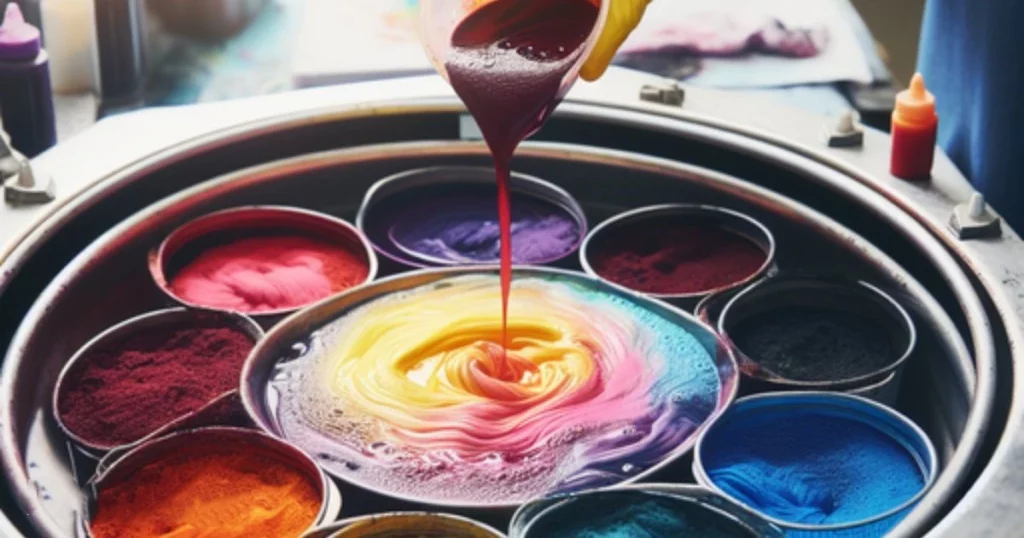
Read More: Best scarves
How to Tie dye chiffon?
Tie-dye is a vibrant and expressive textile art form where fabric is folded, twisted, or bound with rubber bands before being dyed, creating unique and colorful patterns. Its free-spirited and unpredictable nature has made it a timeless fashion and DIY favorite. Let’s learn how to tie dye a chiffon dress or a dopatta.
- Prepare Dress: Dampen the chiffon dress.
- Gather Supplies: Use plastic squeeze bottles, rubber bands, and plastic gloves.
- Create Designs: Pinch, secure with bands for patterns.
- Apply Dye: Squeeze colors onto sections, avoiding damage.
- Wrap and Set: Cover with plastic wrap, let set for hours.
- Rinse and Wash: Rinse until clear, wash with mild detergent.
- Air Dry: Lay flat for vibrant tie-dyed chiffon.
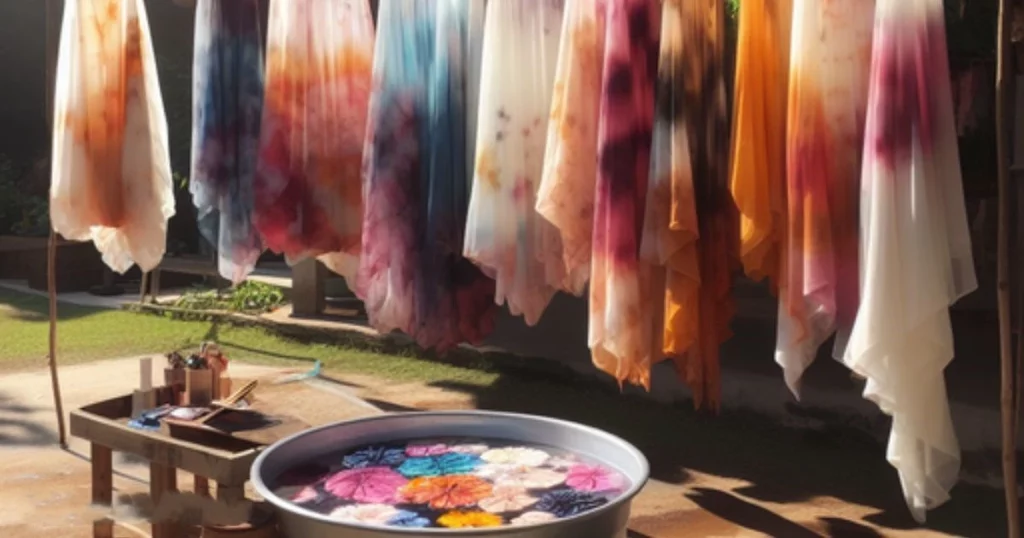
Conclusion
In conclusion, learning to dye chiffon material is a rewarding endeavor that allows for the infusion of vibrant colors into this delicate fabric. With careful attention to detail and the right materials, one can create chiffon garments into unique expressions of style and creativity.



